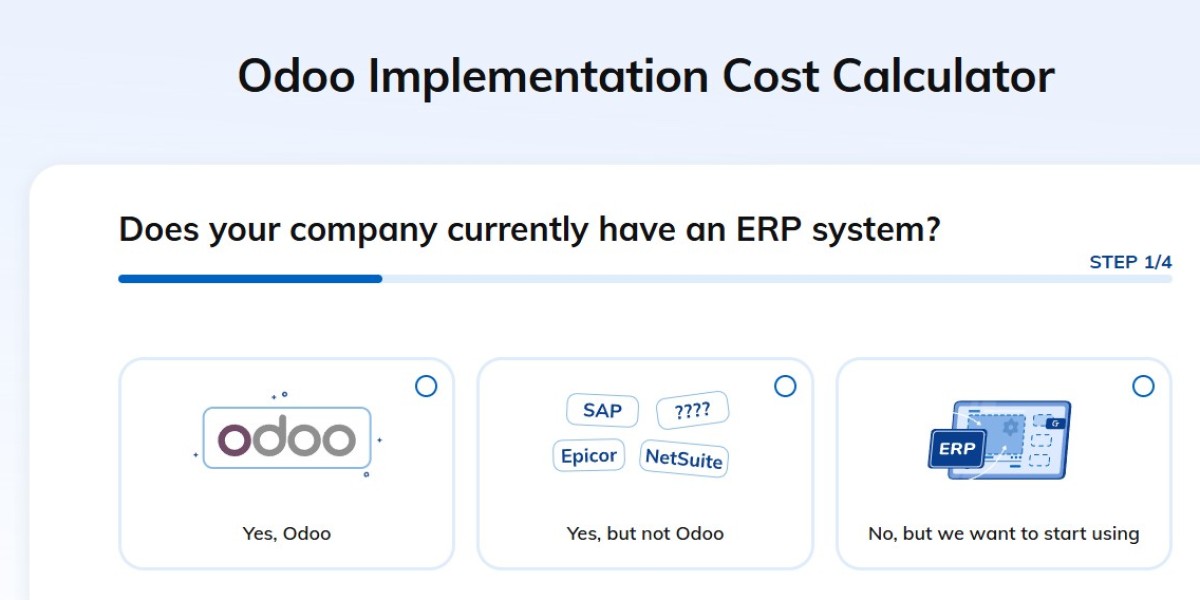Implementing an ERP (Enterprise Resource Planning) system like Odoo can be transformative for businesses, offering improved efficiency, centralized data management, and enhanced decision-making capabilities. However, one of the most common questions business leaders ask before committing is: What drives the cost of Odoo implementation?
1. Business Size and Complexity
The first and most obvious driver of the cost of Odoo implementation is the size and complexity of your organization. A small startup with basic accounting needs will spend far less than a multinational manufacturing firm requiring a fully integrated suite of modules, advanced reporting, and multiple language/currency support.
Key considerations:
Number of departments
Number of users
Volume of transactions
Number of business locations
Intercompany workflows
Smaller businesses may only need Odoo’s out-of-the-box features, while larger enterprises often require extensive customization, integration with third-party systems, and comprehensive user training—all of which drive up costs.
2. Number and Type of Modules Required
Odoo is known for its modular approach, allowing businesses to pick and choose from over 30 core applications and thousands of third-party apps. Commonly used modules include:
Sales
Inventory
Accounting
Manufacturing (MRP)
Human Resources
CRM
Project Management
eCommerce
The more modules you need, the more implementation effort is required. Each module may involve:
Configuration and testing
Business process mapping
End-user training
Ongoing support
Moreover, some modules like Manufacturing, Accounting, and HR are more complex than others and often require more customization and regulatory compliance, significantly impacting the odoo erp implementation cost.
3. Customization and Development
Odoo is highly customizable, which is a blessing and a budget consideration. If your business requires custom workflows, non-standard reports, or additional features beyond the standard functionality, you’ll likely need development work.
Customization cost drivers:
Custom modules or apps
UI/UX enhancements
Advanced workflows
Business-specific automations
Integration with legacy or third-party systems
Custom development requires skilled Odoo developers who understand both the technical and functional aspects of the platform. Hiring a professional Odoo implementation partner can ensure quality, but it comes at a cost.
Pro Tip: Avoid unnecessary customizations. Always evaluate whether a business process can adapt to standard Odoo workflows instead of tailoring the system entirely to legacy processes.
4. Deployment Method: Cloud vs. On-Premise
Where you choose to host your Odoo ERP can significantly influence the overall odoo implementation cost. You typically have three options:
a. Odoo Online (SaaS)
Managed by Odoo S.A.
No hosting setup required
Lower upfront costs
Limited customization options
b. Odoo.sh (PaaS)
Hosted on Odoo’s own platform
More customization than SaaS
Requires technical configuration
c. On-Premise
Installed on your own server or data center
Full control and customization
Higher initial infrastructure and maintenance costs
While cloud-based deployments are more popular for SMBs due to lower upfront costs and ease of use, on-premise deployments often appeal to large enterprises with complex infrastructure or stringent data security requirements.
The cost of Odoo implementation rises with on-premise models due to hardware setup, server management, and IT staffing.
5. Data Migration Requirements
Migrating data from your legacy systems to Odoo can be time-consuming and resource-intensive. The complexity depends on:
Data volume
Data formats (CSV, SQL, API)
Data quality (incomplete, duplicate, outdated)
Systems involved (CRM, accounting software, ERP)
A smooth migration requires mapping old data structures to Odoo’s schema, data cleansing, validation, and testing.
The more complex the migration, the more hours of effort are needed, which adds to the odoo erp implementation cost. Often, companies underestimate this cost and face project delays or budget overruns.
6. Training and Change Management
Even the most powerful ERP system is ineffective if your team doesn’t know how to use it. That’s why training is a crucial (and often overlooked) component of ERP implementation.
Types of training:
Functional user training for everyday tasks
Admin training for system configuration
Developer training for internal IT teams
The odoo implementation cost will vary depending on:
Number of users to be trained
Training method (on-site, online, self-paced)
Custom documentation requirements
Duration and depth of the sessions
Additionally, change management initiatives such as internal communication, user adoption planning, and stakeholder alignment also incur costs—but are vital for a successful ERP rollout.
7. Ongoing Support and Maintenance
After the system goes live, there will always be a need for support, bug fixes, version upgrades, and new feature enhancements. Odoo releases major updates annually, and skipping upgrades can result in compatibility issues later on.
Post-implementation costs include:
SLA-based support agreements
Bug tracking and fixes
Feature updates
Module additions
Security patches
Odoo version upgrades
Whether you rely on your in-house IT team, hire freelancers, or retain a certified Odoo partner, this ongoing investment must be accounted for in your overall cost of Odoo implementation.
Real-World Odoo Implementation Cost Estimates
To give you a better idea of potential budgets, here are some rough industry benchmarks:
| Business Type | Number of Users | Modules Used | Approximate Cost ($USD) |
|---|---|---|---|
| Small Business (SaaS) | 5–10 | CRM, Sales, Invoicing | $8,000 – $20,000 |
| Mid-sized Business | 20–50 | Sales, Inventory, Accounting, HR | $25,000 – $75,000 |
| Large Enterprise | 100+ | Full Suite with Custom Dev | $100,000+ |
Keep in mind these are average figures. A highly customized project in a regulated industry (e.g., healthcare, finance) could far exceed these estimates due to the need for compliance, audit trails, and advanced reporting.
Tips to Control Odoo ERP Implementation Cost
While the odoo erp implementation cost can vary significantly, here are a few ways to keep expenses in check:
Prioritize essential modules for initial rollout
Avoid over-customization in the first phase
Plan phased implementation rather than a big bang approach
Invest in user training to reduce post-launch support issues
Partner with experienced Odoo implementers who understand your industry
Conclusion
Understanding what drives the cost of Odoo implementation is crucial to making informed decisions and ensuring a successful deployment. From the number of modules to data migration, customization, and support—each component adds layers of complexity and cost.
By carefully evaluating your business needs and selecting the right implementation approach, you can strike a balance between functionality and budget. Whether you're a growing startup or a large enterprise, being aware of these cost drivers helps you avoid surprises and achieve maximum ROI on your Odoo ERP investment.









